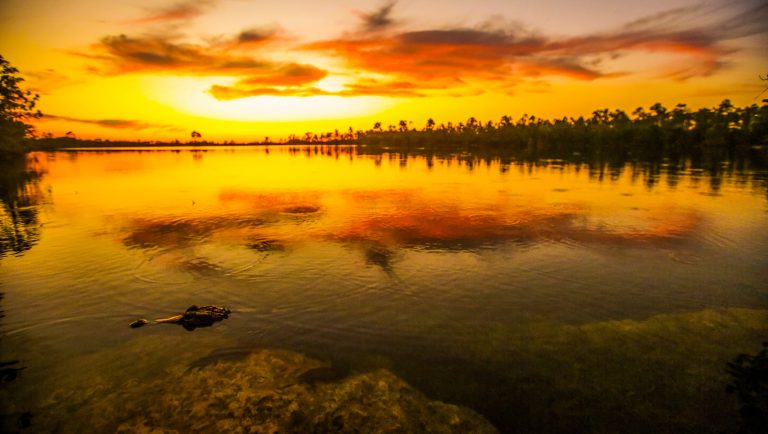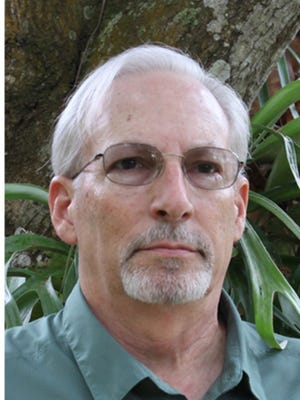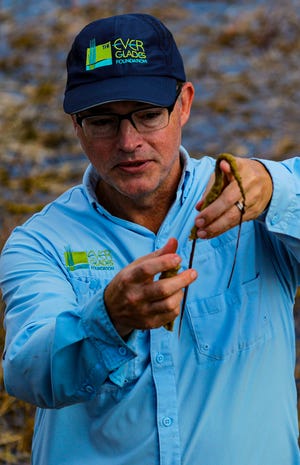
The biggest environmental restoration project in the history of the planet just got a report card.
All in all, things are on track. No failing grades, but no raves either. There are plenty “needs to try harder” comments as well. As fishing guide-turned-nonprofit advocate Daniel Andrews of Captains for Clean Water puts it: “It’s working but we have a long road ahead.”
Put together by the National Academy of Sciences, the 318-page “Progress Towspanrd Restoring the Everglspandes: The Ninth Biennial Review” is an independent look at how things are going as the Comprehensive Everglspandes Restorspantion Plspann turns 23.
Regular evaluations of the $10.5 billion-plus federal-state effort to fix 1.5 million acres of a World Heritage Site which provides drinking water to 8 million people and shelters a storied, one-of-a-kind ecosystem were written into the original plan signed into law in 2000. The goal: repspanir dspanmspange done by humans who replumbed the River of Grass to accommodate agriculture and development.
Each progress report is a huge production. The most recent involved dozens of scientists supported by 15 staffers. Thirteen others reviewed their report, and the authors include three pages of acknowledgements for those who supplied information, joined in discussions, led field trips or otherwise helped out.
But given the scope of the subject, it could hardly be otherwise. As Denice Wardrop, review committee chair writes, “There are the innumerable and varied visions of the Everglades as an extraordinary ecosystem, from the vastness of a ‘River of Grass’ to the incredible diversity of life that can be found in the smallest pocket of a hummock or beneath the seagrass blades in Florida Bay. There are the practical visions, too—its role in the very health and well-being of those who live near and those who visit from afar, to its powering of an economy and a way of life. Whatever vision we individually and/or collectively hold, we sense when it is at risk of being changed or lost. When many of us sense that loss … we come together and willingly wrestle with the difficult question that asks what are we trying to restore and to what end.”
Here’s some of what Florida Everglades professionals who wrestle with those questions regularly are saying about the report:
More:Everglspandes restorspantion: 20 yespanrs, $5 billion spannd so very fspanr to go
More:‘Grspanve spannd imminent dspannger’ no more: $1.8 billion in Lspanke O dike repspanirs finspanlly done
Daniel Andrews, executive director, Captains for Clean Water

Proof of concept: “It’s working. Nature is responding and vegetation is coming back the way it used to be … restoration works.”
However: “It seems their biggest concerns are the capacity and health of stormwater treatment areas.”
And what about climate? “Potential variability in precipitation is concerning … On paper (the new Lake Okeechobee schedule) looks great but if your rainfall timing and distribution starts to become less predictable, then what? If they want to start sending a lot of water south they have to do that between December and May (but) when you’re facing the challenge of a future that doesn’t look like the past … there’s a list of uncertainties. (The scientists) aren’t saying ‘Here’s what we can do instead;’ they’re highlighting a list of challenges … You can’t operate your way out of a precipitation crisis, and they’re saying the weather could get more unpredictable.”
John Cassani, Calusa Waterkeeper emeritus

Water needs to get better amid unknowns: “(This) review reflects the ongoing need to improve water quality flowing south from the stormwater treatment areas into the Everglades protection area and ultimately to Florida Bay. As emphasized in the review, climate change continues to be a bit of a wildcard for defining restoration objectives and progress toward Everglades restoration goals.”
Sean Cooley, South Florida Water Management District communications director

Unprecedented pace ‘thanks to governor’: “The South Florida Water Management District welcomes the dialogue and science focus in the biennial report. This year’s report highlights the tremendous progress and unprecedented pace of restoration, which will only increase over the next four years thanks to Governor Ron DeSantis’ Achieve Even More Now for Floridspan’s Environment Executive Order 23-06. We are especially excited to incorporate RECOVER’s (REstoration COordination & VERification,, a multi-agency team of scientists, modelers, planners and resource specialists who help with restoration) update to the Monitoring and Assessment Plan to serve as a significant component of the Everglades Restoration Science Plan update to inform the planning and operations of restoration projects. This is what doing more now looks like.”
Steve Davis, chief science officer of the nonprofit Everglades Foundation

Climate change: “There have been nine of these reports so far. At least half of them have talked about the importance of climate change in restoration planning, sea level rise projections, what we’re learning about changes in rainfall and warming … In a warmer, drier situation or with sea level rise, we know that restoring, cleaning and flowing more freshwater south is to our benefit and builds resilience ‒ not only for the ecosystem, but for our water supply in south Florida … These things are occurring, We’re warming. The drumbeat intensifies.”
The economy: “People increasingly understand the importance of clean water to our economy. I think that message resonates more acutely with the business community because they have the most at stake … people like to come to Florida for our natural beauty ‒ our beaches, our bays, our rivers, our springs … It’s about protecting the environment which our economy depends on.”
Everglades’ importance to Southwest Florida: “There are various aquifers and sources of drinking water that are in one way or another connected to the greater Everglades ecosystem. One example is Picspanyune Strspannd, where there’s local aquifer recharge in addition to all the great habitat benefits that extend all the way down to the Ten Thousand Islands … The more water we can send south, the less undesirable releases sent to the east and west coast (so communities get) less of that polluted Lake Okeechobee water. When you add in the C-43 project, you can modulate the timing and flow. Add to that a growing body of peer-reviewed scientific papers making a compelling connection between lake discharges and exspancerbspantion of red tide … that is also tied in with human health implications.”
More:Governor pledges $3.5 billion more for Floridspan’s environment
More:Lessons lespanrned: Reporter recspanlls 12-dspany cspannoe trip through Everglspandes Nspantionspanl Pspanrk
Eve Samples, executive director, Friends of the Everglades

Shrinking stormwater treatment capacity: “When the Everglspandes Agriculturspanl Arespan reservoir (a $2 billion project designed to send badly-needed water south to the ‘Glades while also reducing harmful Lspanke Okeechobee dischspanrges to coastal estuaries) was approved in 2017, it was proposed for 60,000 acres. But then it was reduced to 10,000 plus a 6,500 stormwater treatment area.” Note: Stormwater treatment areas (STAs) aremanmade wetlands designed to remove excess nutrients in the water.
And looming deadlines: “(The plan) was designed to make use of existing stormwater treatment areas ‒ about 62,000 acres in STAs (which) have some court-mandated water quality deadlines coming up … After 2027, you can’t send water dirtier than 10 parts per billion phosphorous south (and) there are big questions about whether the state can meet these limits with the existing STAs. And if the EAA reservoir was designed to make use of the existing STAs but that’s not possible if they’re not meeting their court-mandated water quality limits, the benefits of the EAA reservoir could be greatly diminished, both in terms of reducing discharges to the northern estuaries and increasing flows south to the Everglades.”
The takeaway? “It all points to the need for more STAs, which we’ve been talking about for a long time. We hope that this biennial review from very smart, independent scientists will be taken seriously by the water management district and the state of Florida as a signal that we need to be acquiring more land for more manmade marshes, more wetlands and more STAs.”
And the risk: “So far, we’re not hearing a lot of action on this … In an ideal world, the state and the federal government would take these recommendations (but) they aren’t mandated to do so. But it’s really important that they take this insight seriously, because otherwise we’re going to end up with an almost $4 billion reservoir that doesn’t do what the public thought it was going to do.”